Temporary protected status
Temporary Protected Status (TPS) is a temporary status given to eligible nationals of designated countries who are present in the United States. The status, afforded to nationals from some countries affected by armed conflict or natural disaster, allows persons to live and work in the United States for limited times.[1][2] Currently, persons from ten countries—Haiti, El Salvador, Syria, Nepal, Honduras, Yemen, Somalia, Sudan, Nicaragua and South Sudan—have temporary protected status. About 320,000 people have TPS as of 2017, the majority from El Salvador (195,000), Honduras (57,000), and Haiti (46,000).[2]
| U.S. citizenship and immigration |
|---|
| Immigration |
| Citizenship |
| Agencies |
| Legislation |
| History |
| Relevant legislation |
History
In 1990, as part of the Immigration Act of 1990 ("IMMACT"), P.L. 101-649, Congress established a procedure by which the Attorney General may provide temporary protected status to immigrants in the United States who are temporarily unable to safely return to their home country because of ongoing armed conflict, an environmental disaster, or other extraordinary and temporary conditions.[3][4]
On March 1, 2003, pursuant to the Homeland Security Act of 2002, Public Law 107-296, the former Immigration and Naturalization Services of the Department of Justice was divided into three different agencies under the Department of Homeland Security, namely U.S. Immigration and Customs Enforcement, United States Citizenship and Immigration Services (USCIS), and U.S. Customs and Border Protection (USCBP).[5] As of October 2017, the authority to designate a country for temporary protected status rests with the United States Secretary of Homeland Security.
TPS beneficiaries and those who are found preliminarily eligible for TPS upon initial review of their cases are not removable from the United States, can obtain employment authorization (with an Employment Authorization Document/EAD), and may be granted travel authorization via Form I-131, Application for Travel Document.[6]
By 2017, the temporary protected status program covered people from ten countries, namely El Salvador, Haiti, Honduras, Liberia, Nepal, Nicaragua, Somalia, Sudan, South Sudan, Syria, and Yemen. By November 2017, about 300,000 foreign nationals were recipients of protection under temporary protected status.[7] Some have been in the United States since the 1990s.
Deferred Enforced Departure is a status similar to temporary protected status. It covers those who formerly had TPS from certain countries prior to its termination. It is active for Liberia through March 30, 2020 and covers those who had TPS as of the termination of the second most recent TPS designation of Liberian on September 30, 2007. [8] Liberians covered by DED, as well as some Liberians not covered by DED, may be eligible for permanent resident status (a Green Card) under recently enacted legislation known as Liberian Refugee Immigration Fairness Act (LRIF). [8]
As of September 2020, the program had become a source of political controversy, with the administration of President Trump seeking to end protections and advocacy groups instead recommending a pathway to permanent residency status.[9]
Eligibility
Designation by the Attorney General of a country's nationals for temporary protected status allows all of those country's nationals who are in the United States on the day of the designation to apply for temporary protected status. Anyone from that country who enters after that date is not eligible. When the status comes up for expiration, the Attorney General of the United States may choose to redesignate, allowing that country's nationals who have entered since the original designation to apply, or to extend, which merely allows the previous recipients to maintain their status until the new expiration date.[10]
A person who is a national of a country, or a person having no nationality who last habitually resided in that country, designated for temporary protected status is eligible to apply for temporary protected status benefits if he or she:
- Establishes the necessary continuous physical presence and continuous residence in the United States as specified by each designation;
- Is not subject to one of the criminal, security-related, or other bars to temporary protected status; and
- Applies for temporary protected status within the specified time period. If the Attorney General of the United States extends a temporary protected status designation beyond the initial designation period, the beneficiary must timely re-register to maintain his or her temporary protected status benefits under the temporary protected status program.
A person is not eligible for temporary protected status if he or she:
- Has been convicted of any felony or two or more misdemeanors committed in the United States;
- Is a person who ordered, incited, assisted, or otherwise participated in the persecution of any person on account of race, religion, nationality, membership in a particular social group, or political opinion, or is otherwise subject to one of the bars to asylum; or
- Is subject to one of several criminal-related or terrorism-related grounds of inadmissibility for which a waiver is not available.
Late initial registration is available for those who did not apply during the initial registration period of a country's temporary protected status designation. In addition to meeting all of the other requirements for temporary protected status in one's own right (residence, physical presence, etc.), a late initial registrant must establish eligibility to file late by showing that one or more of the late initial filing conditions existed during the initial registration period and also within 60 days of filing the late initial temporary protected status application. Children and spouses of temporary protected status-eligible individuals cannot derive continuous residence or continuous physical presence from their parents or spouses for late initial filings.
Injunctions From Implementing and Enforcing the Terminations of TPS for El Salvador, Nicaragua, Haiti, Sudan, Honduras, and Nepal
The Department of Homeland Security (DHS)'s previously announced decisions to terminate TPS for El Salvador, Nicaragua, Sudan, Haiti, Honduras, and Nepal as of certain dates are undergoing challenges in the court system. At least until the current litigation is resolved, the termination of TPS will not go into effect for these countries. Specifically:
- On Oct. 3, 2018, in Ramos, et al. v. Nielsen, et al., No. 18-cv-01554 (N.D. Cal. Oct. 3, 2018), the U.S. District Court for the Northern District of California enjoined DHS from implementing and enforcing the decisions to terminate TPS for Sudan, Nicaragua, Haiti and El Salvador, pending further resolution of the case.[11]
- The termination of TPS for Nepal and Honduras will also not go into effect until pending litigation is resolved. As required by the court-approved stipulation in Bhattarai v. Nielsen, No. 19-cv-731 (N.D. Cal), USCIS will extend appropriate TPS-related documentation (Employment Authorization Documents; Forms I-797, Notice of Action; and Forms I-94, Arrival/Departure Record) for eligible beneficiaries of TPS Honduras and TPS Nepal similar to the way it has for TPS beneficiaries in Ramos v. Nielsen. The terminations of TPS for Nepal and Honduras will not go into effect while appeals remain pending in Ramos, a case that presents issues much like those in Bhattarai.[12]
The "Automatic Extension of EADs Issued Under the TPS Designations for El Salvador, Haiti, Honduras, Nepal, Nicaragua, and Sudan" and "Automatic Extension of Forms I-94 and Forms I-797" tables in the most recent Federal Register Notices (FRNs) for these countries state whether the validity of current TPS registrants' Employment Authorization Documents (EADs), TPS I-821 approval notices, and/or I-94s has been automatically extended without needing to file a new Form I-821 and/or Form I-765.[11] The "Automatic Employment Authorization Document (EAD) Extension" section of each of U.S. Citizenship and Immigration Services (USCIS)'s country-specific TPS webpages also states which prior EAD, approval notice, and I-94 end validity dates have been automatically extended without the need to re-file as long as registrants maintain eligibility for TPS.[11]
Those whose TPS documents have been automatically extended can show their existing documentation and a copy of the relevant FRN to employers and agencies as verification of their continuing TPS and employment authorization.[13] Registrants whose EADs, I-821 approval notices, and/or I-94s have been automatically extended do not receive any notification of or documentation concerning the extension of validity other than the FRN itself.[14]
Impact of the Potential Terminations of TPS for El Salvador, Nicaragua, Haiti, Sudan, Honduras, and Nepal
Registrants who are poised to potentially lose TPS if it is terminated for their country and not continued based on an injunction have a number of options. Salvadorian official Roberto Lorenzana[lower-alpha 1] estimates that about half will be eligible to apply for permanent residence.[15] Many are expected to stay in the United States illegally.[16] However, those who do choose to stay in the United States illegally are expected to be much easier to deport than most undocumented immigrants because their home and workplace are known to the government through the application process for temporary protected status.[15]
César Ríos of the Salvadorean Migrant Institute estimates that, at most, 15% of Salvadorians with temporary protected status will return to El Salvador if their status terminates."[15] Some have considered moving to Canada.[15] The government of El Salvador has been in conversation with the government of Qatar about some of those formerly under temporary protected status working in Qatar temporarily.[17]
The United States has made an agreement with El Salvador to limit the number of deportation flights to eight a week, each with a maximum capacity of 135 people. This puts the maximum number of deportations at 56,000 Salvadoreans a year.[15][lower-alpha 2]
Business owners and local governments in the United States have expressed concern about the economic impact of possibly enforcing TPS terminations on industries which depend on workers in the United States under temporary protected status.[16] Deportation is expected to cause disruption in El Salvador and increase illegal immigration from El Salvador to the United States.[16]
A 2017 study by the Immigrant Legal Resource Center found that removing temporary protected status from Haitians, Salvadorans, and Hondurans would decrease Social Security and Medicare income by $6.9 billion, decrease Gross Domestic Product by $45.2 billion, and incur deportation costs of $3.1 billion over 10 years.[19][16]
Concerns also exist that if TPS is terminated for large numbers of registrants who have now lived and worked in the United States for decades under the program, numerous United States citizen children who currently reside with and depend on their TPS registrant parents or guardians will be impacted.[20]
Employment authorization
Temporary protected status applicants are eligible to receive an Employment Authorization Document based on temporary protected status only if they have a pending or approved initial Form I-821 (Application for Temporary Protected Status).[21] Category C19 appears on Employment Authorization Documents issued while the initial Form I-821 is pending approval or denial; therefore, receiving a C19 Employment Authorization Document does not mean that an applicant has been granted temporary protected status. Category A12 appears on Employment Authorization Documents issued after the initial Form I-821 has been approved.
During the period for which a country has been designated for temporary protected status, temporary protected status beneficiaries may remain in the United States and may obtain work authorization. A person in temporary protected status is considered as being in "lawful status as a nonimmigrant".[22][23] Temporary protected status does not provide a path to permanent resident status (green card) or United States citizenship.[22]
Temporary protected status is typically designated for between 6 and 18 months at a time for each country; once that time is up, the status expires and its beneficiaries revert to the same immigration status they maintained before temporary protected status (unless that status had since expired). Accordingly, if an immigrant did not have lawful status prior to receiving temporary protected status and did not obtain any other lawful status during the designation of temporary protected status, the person reverts to unlawful status upon the expiration of that designation of temporary protected status.[24] However, employment authorization documentation (EADs) and/or TPS approval notices that appear to contain expired validity dates on their face may be automatically extended without the need to file a new Form I-821 and/or Form I-765 per the most recent Federal Register Notices (FRNs) for each country.[25]
Denial or withdrawal of application
8 Code of Federal Regulations (CFR) Section 244.14 lists the grounds based on which USCIS may withdraw TPS.[26] As long as the current designation of TPS for a registrant's country remains active, withdrawal of TPS must be by written notice from USCIS to the former TPS holder.
Applicants are not eligible to file a re-registration temporary protected status application if their initial Form I-821 has been denied or if United States Citizenship and Immigration Services has withdrawn its prior approval of their TPS.[27] The automatic validity extension of certain TPS documentation for countries covered by the injunctions/litigation (El Salvador, Nicaragua, Haiti, Sudan, Honduras, and Nepal) also does not apply for anyone whose TPS has been formally withdrawn by USCIS.
If temporary protected status has been denied or withdrawn, however, it is possible to file another initial Form I-821. USCIS will treat the new initial Form I-821 as a late initial registration application. The full initial application fees must be paid for all multiple initial Form I-821s, and in Part 1 of the new initial Form I-821, Box A must be selected.
If United States Citizenship and Immigration Services approves a subsequent initial Form I-821, the applicant's temporary protected status will be established or restored and she or he may thereafter file re-registration applications.
Alternatively, an applicant whose temporary protected status has been denied or withdrawn may follow the instructions provided in the Notice of Denial or Withdrawal for filing a Form I-290B (Notice of Appeal or Motion) or, if applicable, seeking de novo review of TPS eligibility before an Immigration Judge in deportation or exclusion proceedings.
Nationals
Nationals of countries that are under temporary protected status as of October 2019
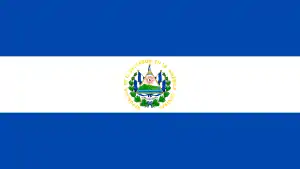 El Salvador — since March 9, 2001; in response to the January 2001 and February 2001 El Salvador earthquakes; the temporary protected status of 263,280 Salvadorans was scheduled to end on September 9, 2019 prior to the injunction; Salvadorians also had TPS in the 1990s.[28][29][30][lower-alpha 3]
El Salvador — since March 9, 2001; in response to the January 2001 and February 2001 El Salvador earthquakes; the temporary protected status of 263,280 Salvadorans was scheduled to end on September 9, 2019 prior to the injunction; Salvadorians also had TPS in the 1990s.[28][29][30][lower-alpha 3]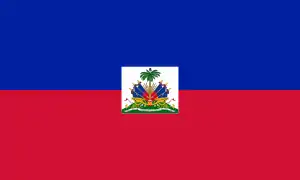 Haiti — since July 23, 2011; in response to the 2010 Haiti earthquake;[32][33][34] temporary protected status was scheduled to terminate as of January 2, 2020 prior to the injunction.[28][35][36][lower-alpha 3]
Haiti — since July 23, 2011; in response to the 2010 Haiti earthquake;[32][33][34] temporary protected status was scheduled to terminate as of January 2, 2020 prior to the injunction.[28][35][36][lower-alpha 3]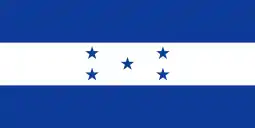 Honduras — since January 5, 1999; in response to Hurricane Mitch in November 1998;[37] protection was scheduled to terminate on November 4, 2019 prior to the current litigation.[38] [lower-alpha 4]
Honduras — since January 5, 1999; in response to Hurricane Mitch in November 1998;[37] protection was scheduled to terminate on November 4, 2019 prior to the current litigation.[38] [lower-alpha 4] Nepal — since June 24, 2015; in response to the conditions resulting from the devastating magnitude 7.8 April 2015 Nepal earthquake and the subsequent aftershocks; TPS was scheduled to terminate on March 24, 2020 prior to the current litigation.[40][41][42][lower-alpha 4]
Nepal — since June 24, 2015; in response to the conditions resulting from the devastating magnitude 7.8 April 2015 Nepal earthquake and the subsequent aftershocks; TPS was scheduled to terminate on March 24, 2020 prior to the current litigation.[40][41][42][lower-alpha 4]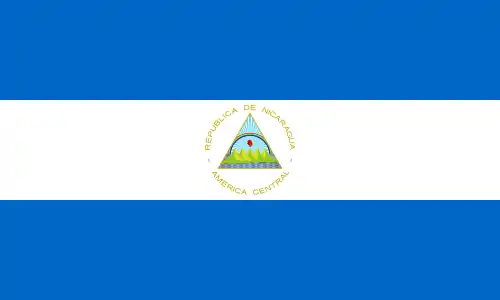 Nicaragua — since January 5, 1999; in response to Hurricane Mitch in November 1998; was scheduled to terminate on January 2, 2020 prior to the current injunction.[43][lower-alpha 3]
Nicaragua — since January 5, 1999; in response to Hurricane Mitch in November 1998; was scheduled to terminate on January 2, 2020 prior to the current injunction.[43][lower-alpha 3] Somalia — since Sep. 16, 1991; in response to the ongoing Somali Civil War; extended through March 17, 2020.[44]
Somalia — since Sep. 16, 1991; in response to the ongoing Somali Civil War; extended through March 17, 2020.[44]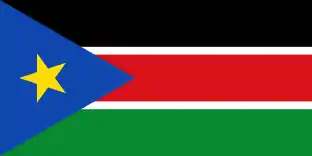 South Sudan — since January 25, 2016, in response to the ongoing South Sudanese Civil War; extended through November 2, 2020.[45]
South Sudan — since January 25, 2016, in response to the ongoing South Sudanese Civil War; extended through November 2, 2020.[45] Sudan — since May 3, 2013; in response to the ongoing Sudanese conflict in South Kordofan and Blue Nile; was scheduled to terminate on January 2, 2020 prior to the current injunction.[46][lower-alpha 3]
Sudan — since May 3, 2013; in response to the ongoing Sudanese conflict in South Kordofan and Blue Nile; was scheduled to terminate on January 2, 2020 prior to the current injunction.[46][lower-alpha 3] Syria — since March 29, 2012; in response to the ongoing Syrian Civil War; extended through March 31, 2021.[47]
Syria — since March 29, 2012; in response to the ongoing Syrian Civil War; extended through March 31, 2021.[47] Yemen — since September 3, 2015; in response to the ongoing Yemeni Civil War;[48] extended through March 3, 2020.[49]
Yemen — since September 3, 2015; in response to the ongoing Yemeni Civil War;[48] extended through March 3, 2020.[49]
Nationals of countries formerly under temporary protected status
 Kuwait: March 1991 – March 1992[22]
Kuwait: March 1991 – March 1992[22] Lebanon: March 1991 – March 1993[22]
Lebanon: March 1991 – March 1993[22] Bosnia-Herzegovina: August 1992 – February 2001[22]
Bosnia-Herzegovina: August 1992 – February 2001[22]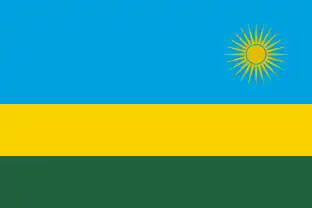 Rwanda: June 1995 – December 1997[22]
Rwanda: June 1995 – December 1997[22] Montserrat: 1997 – February 2005[50][51] (No longer temporary as "volcanic eruptions are unlikely to cease in the foreseeable future")[52]
Montserrat: 1997 – February 2005[50][51] (No longer temporary as "volcanic eruptions are unlikely to cease in the foreseeable future")[52] Burundi: November 4, 1997 – May 2, 2009[22]
Burundi: November 4, 1997 – May 2, 2009[22] Sierra Leone: November 4, 1997 – May 3, 2004[22] (during a civil war)[53]
Sierra Leone: November 4, 1997 – May 3, 2004[22] (during a civil war)[53] Kosovo, Province of Serbia: June 1998 – December 2000[22]
Kosovo, Province of Serbia: June 1998 – December 2000[22] Angola: March 29, 2000 – March 29, 2003[22]
Angola: March 29, 2000 – March 29, 2003[22] Guinea: November 21, 2014 – April 25, 2017[22] (during the 2014 Ebola outbreak[54])
Guinea: November 21, 2014 – April 25, 2017[22] (during the 2014 Ebola outbreak[54]) Liberia: November 21, 2014 – April 25, 2017[22] (during an Ebola outbreak[54]); a prior Liberian TPS designation terminated on September 30, 2007, and it is that older designation which renders TPS holders at that time eligible for DED.
Liberia: November 21, 2014 – April 25, 2017[22] (during an Ebola outbreak[54]); a prior Liberian TPS designation terminated on September 30, 2007, and it is that older designation which renders TPS holders at that time eligible for DED. Sierra Leone: November 21, 2014 – April 25, 2017[22] (during an Ebola outbreak[54])
Sierra Leone: November 21, 2014 – April 25, 2017[22] (during an Ebola outbreak[54])
Notes
- See "Roberto Lorenzana". Thirty-sixth session of ECLAC (Biography). 5 May 2016.
- ICE typically utilizes only eight airplanes for deportation worldwide, at a cost of $8,410 per flight-hour in 2015.[18]
- On October 3, 2018, in Ramos, et al v. Nielsen, et al., the United States District Court for the Northern District of California enjoined the Department of Homeland Security from implementing and enforcing the decisions to terminate Temporary Protected Status for Sudan, Haiti, El Salvador, and Nicaragua, pending further resolution of the case.[31]
- Temporary Protected Status for Nepal and Honduras will not go into effect while appeals are pending in the federal court case of Ramos, et al v. Nielsen, et al., as required by the federal court-approved stipulation in Bhattarai v. Nielsen.[39]
References
- Wilson, Jill H. (November 2, 2017). Temporary Protected Status: Overview and Current Issues (PDF). Washington, DC: Congressional Research Service. Retrieved 21 December 2017.
- D'Vera Cohn & Jeffery S. Passel, More than 100,000 Haitian and Central American immigrants face decision on their status in the U.S., Pew Research Center (November 8, 2017).
- "Pub. L. 101-649 Immigration Act of 1990". United States Department of Justice. March 4, 2009. Retrieved January 8, 2018.
- Ostrow, Ronald J. (November 30, 1990). "Bush signs immigration reform law". Austin American-Statesman (Austin, Texas). p. A2.
- "Our History". USCIS. Retrieved November 1, 2017.
- "Temporary Protected Status". USCIS. January 17, 2020.
- About 2,500 Nicaraguans to Lose Special Permission to Live in U.S. By Ron Nixon Nov. 6, 2017
- "DED Granted Country - Liberia". USCIS. January 29, 2020.
- UCLA Study Recommends Permanent Residence for Immigrants in Temporary Protected Status (September 5, 2020)
- "Temporary Protected Status". United States Department of Justice. Retrieved November 1, 2017.
- "Temporary Protected Status Designated Country: El Salvador". USCIS. November 1, 2019.
- "Temporary Protected Status Designated Country: Honduras". USCIS. November 1, 2019.
 This article incorporates text from this source, which is in the public domain.
This article incorporates text from this source, which is in the public domain. - https://www.uscis.gov/humanitarian/temporary-protected-status/temporary-protected-status-designated-country-el-salvador
- "Continuation of Documentation for Beneficiaries of Temporary Protected Status Designations for El Salvador, Haiti, Honduras, Nepal, Nicaragua, and Sudan". Federal Register. November 4, 2019.
- "A fearful welcome: How will El Salvador cope with deportees from America?". The Economist. 11 January 2018. Retrieved 17 February 2018.
- Woody, Christopher (17 January 2018). "Trump's latest immigration crackdown threatens the economy". Business Insider. Retrieved 17 February 2018.
- Renteria, Nelson; Cooney, Peter (17 January 2018). "El Salvador eyes work scheme with Qatar for migrants facing exit..." U.S. Retrieved 17 February 2018.
- Ortega, Bob (18 April 2015). "ICE Air may have wasted $41 million flying detainees". The Arizona Republic. Retrieved 17 February 2018.
- Baran, Amanda; Magaña-Salgado, Jose; Wong, Tom K. (April 2017). "Economic contributions by Salvadoran, Honduran, and Haitian TPS holders: The cost to taxpayers, GDP, and businesses of ending TPS" (PDF). Washington, DC: Immigrant Legal Resource Center. Retrieved 17 February 2018.
- Schochet, Leila; Svajlenka, Nicole Prchal. "How Ending TPS Will Hurt U.S.-Citizen Children". Center for American Progress.
- "Temporary Protected Status Alert". U.S. Department of Homeland Security (DHS)/U.S. Citizenship and Immigration Services(USCIS). nd. Retrieved January 8, 2018.
- Wilson, Jill H. (November 2, 2017). "Temporary Protected Status: Overview and Current Issues". Congressional Research Service.
- "Immigration and Naturalization Act, Section 244(f). (8 U.S.C. 125)". United States Citizenship and Immigration Service.
- "Temporary Protected Status". United States Citizenship and Immigration Services. Retrieved November 1, 2017.
- "2.1.3 Unexpired Document Required". E-Verify.
- "8 CFR § 244.14 - Withdrawal of Temporary Protected Status". LII / Legal Information Institute.
- "Decisions Issued in 2009" (PDF). United States Citizenship and Immigration Services. September 14, 2009.
- Ferrisse, Susan (November 6, 2017). "Thousands of immigrants with 'protected status' face possible deportation: Trump administration deciding fate of those allowed in years ago due to war, natural disasters". Retrieved January 8, 2018.
- "Temporary Protected Status Designated Country: El Salvador". United States Citizenship and Immigration Services. Retrieved October 11, 2019.
- Jordan, Miriam (January 8, 2018). "Trump Administration Rules That Nearly 200,000 Salvadorans Must Leave, Officials Say". The New York Times.
- "Ramos, et al v. Nielsen, et al." United States District Court for the Northern District of California. October 3, 2018.
- Jackson, David (January 15, 2010). "Obama team grants special status to Haitian nationals in U.S.". USA Today .
- McKinley Jr., James C. (January 15, 2010). "Vows to Move Fast for Haitian Immigrants in U.S.". The New York Times.
- Atkinson, Khorri (July 21, 2017). "Haitian Immigrants With Temporary Status Await Trump’s Next Move". The New York Times.
- Jordan, Miriam (November 20, 2017). "Trump Administration Ends Temporary Protection for Haitians". The New York Times.
- "Temporary Protected Status Designated Country: Haiti". United States Citizenship and Immigration Services. Retrieved October 11, 2019.
- "Temporary Protected Status Designated Country: Honduras". United States Citizenship and Immigration Services. Retrieved October 11, 2019.
- Jordan, Miriam (May 4, 2018). "Trump Administration Ends Protected Status for Thousands of Hondurans". The New York Times.
- "Update on Bhattarai v. Nielsen". United States Citizenship and Immigration Services". June 7, 2019.
- "DHS Announces Temporary Protected Status Designation for Nepal". United States Citizenship and Immigration Services. Retrieved June 25, 2015.
- "Secretary Kirstjen M. Nielsen Announcement on Temporary Protected Status for Nepal". United States Department of Homeland Security. April 26, 2018. Retrieved May 7, 2018.
- "Temporary Protected Status Designated Country: Nepal". United States Citizenship and Immigration Services. Retrieved October 11, 2019.
- "Temporary Protected Status Designated Country: Nicaragua". United States Citizenship and Immigration Services. Retrieved October 11, 2019.
- "Temporary Protected Status Designated Country: Somalia". United States Citizenship and Immigration Services. Retrieved October 11, 2019.
- "Temporary Protected Status Designated Country: South Sudan". United States Citizenship and Immigration Services. Retrieved October 11, 2019.
- "Temporary Protected Status Designated Country: Sudan". United States Citizenship and Immigration Services. Retrieved October 11, 2019.
- "Temporary Protected Status Designated Country: Syria". United States Citizenship and Immigration Services. Retrieved October 11, 2019.
- "DHS Announces Temporary Protected Status Designation for Yemen". United States Citizenship and Immigration Services. Retrieved September 10, 2015.
- "Temporary Protected Status Designated Country: Yemen". United States Citizenship and Immigration Services. Retrieved October 11, 2019.
- "Temporary Refuge". All Things Considered. National Public Radio. January 9, 1999.
- Levy, Doug (February 21, 2005). "Haven no more: Refugees from volcano-stricken isle must leave U.S." The Patriot Ledger (Quincy, Massachusetts).
- "Termination of the Designation of Montserrat Under the Temporary Protected Status Program". USCIS. July 6, 2004.
- "Termination of the Designation of Sierra Leone Under the Temporary Protected Status Program". USCIS. September 3, 2003.
- "DHS Announces Temporary Protected Status Designations for Liberia, Guinea, and Sierra Leone". Department of Homeland Security. USCIS. Retrieved 16 December 2014.
External links
- Temporary Protected Status: An Overview, American Immigration Council
- Temporary protected status, United States Citizenship and Immigration Services
- Temporary protected status extended For Somalia
- Temporary protected status issued for Syrians, United States Department of Homeland Security
- Temporary protected status issued for Nepal, United States Department of Homeland Security